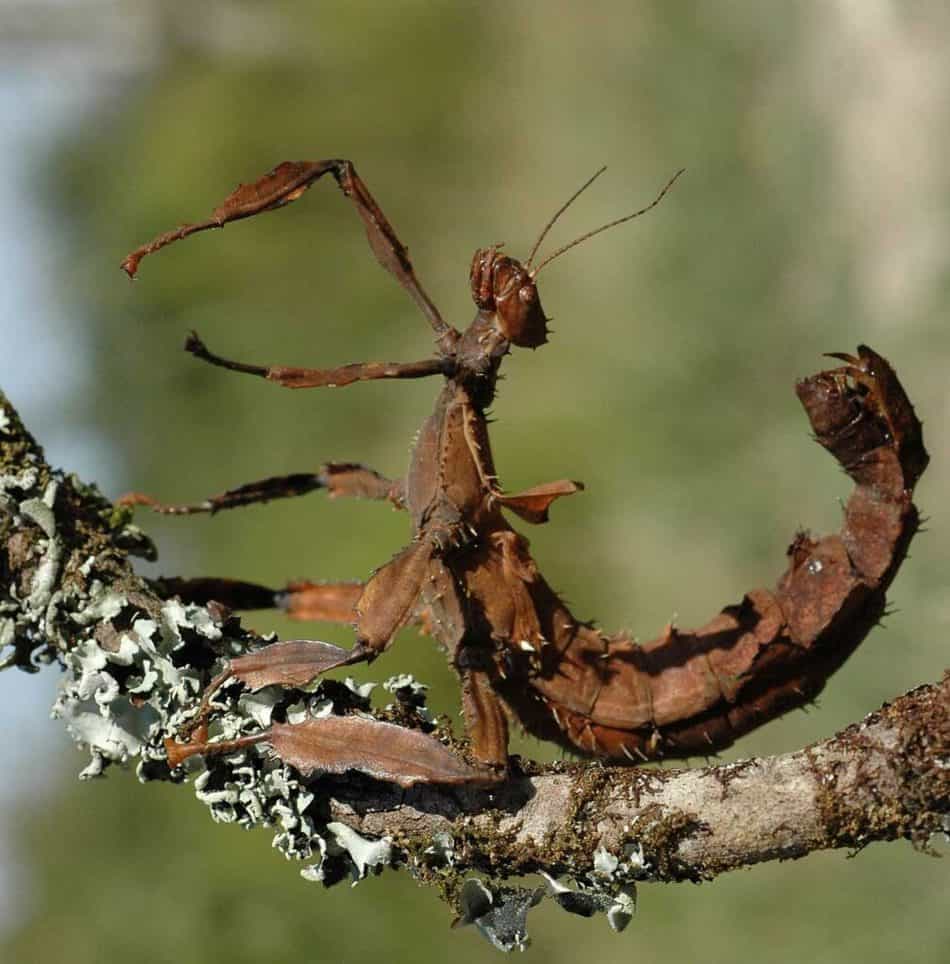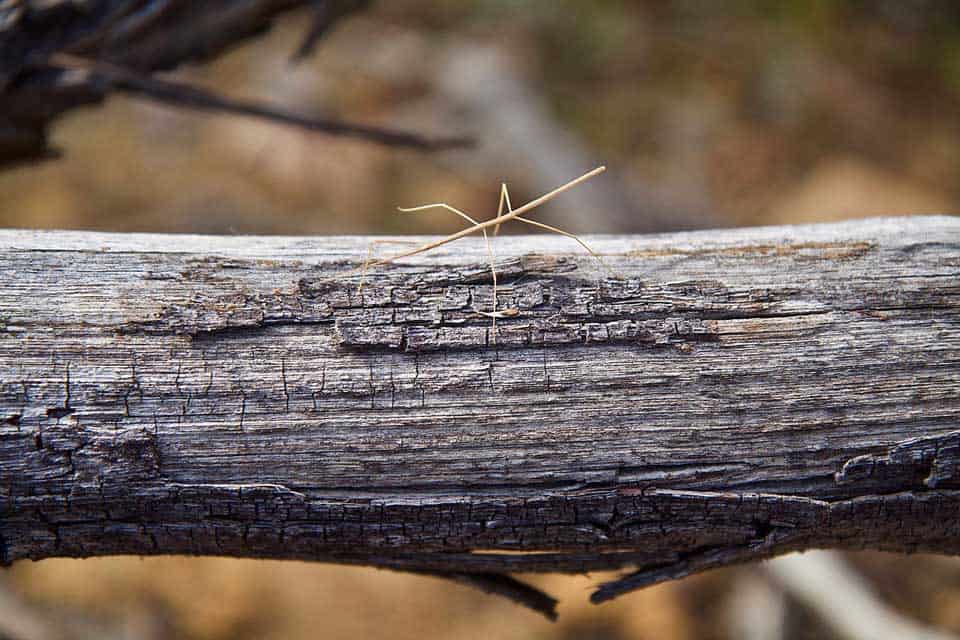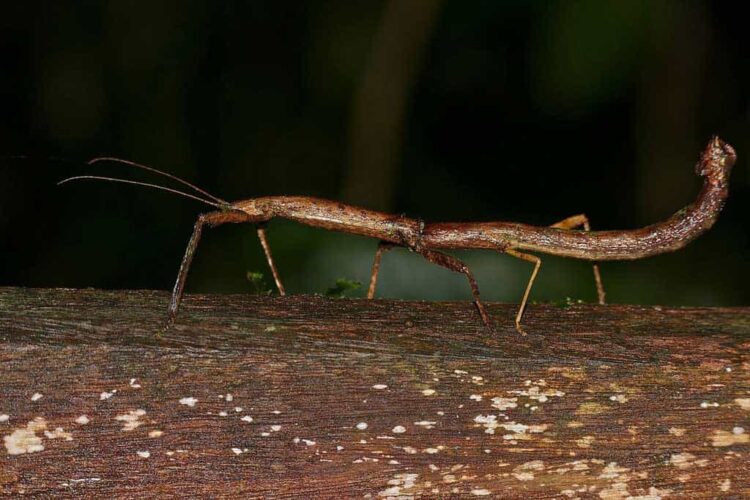Table of Contents
The question of whether stick insects can co-exist peacefully is always quite a difficult topic to cover. Naturally, many novices try out with one stick insect but soon discover that they would like more as part of a new colony. The problem here is that not every stick insect species can be kept together.
Then there are those owners who really may want to keep just the one individual stick insect . In this guide I am going to discuss the question of ‘can stick insects live alone?’ in detail. But in summary…
. In this guide I am going to discuss the question of ‘can stick insects live alone?’ in detail. But in summary…
Yes, stick insects can live alone. They are not social creatures that need to live in groups to thrive, and they do not suffer what we would consider ‘loneliness.’
For more advice and information on keeping and looking after stick insects, check out my ebook on Amazon click here
(opens in a new tab).

Is it Possible for Stick Insects to Live Alone?
There is no conceivable reason that stick insects cannot live alone. A big part of this is that females are able to reproduce asexually, which basically means you are not preventing a female stick insect from producing nymphs by keeping her alone.
Male stick insects are also capable of living alone, but they will not be able to mate; there is some debate as to whether this can reduce their quality of life. Regardless, there will be no perceivable difference in their behaviour.
If you do want stick insects to live together though, you should opt for common species.
Why Should You Always Keep Common Species Together
There are two reasons you should not, for example, bring together a stick insect from North America and an exotic stick insect from Indonesia.
These reasons are:
- the conditions they require to flourish, and
- their tendency to fight.
Different stick insect species require different conditions. There’s just no getting around that. Stick insects from, say, Indonesia or other exotic areas of the world will be used to, among other things, high humidity. Conversely, stick insects from Australia are used to less humidity and a more dry heat.
You couldn’t keep them together because their temperature and humidity ranges would be incompatible to the other. In other words, the well-being of one or the other would be at severe risk.

Temperature is the Main Reason to House a Stick Insect Alone
Temperature is the single largest reason stick insect owners might decide to separate their insects. As described above, each type of stick insect needs a different temperature range and a different level of humidity to live comfortably.
and a different level of humidity to live comfortably.
It’s also true that stick insects grow faster depending on the temperature they are kept in. Keep a stick insect at a higher temperature than it’s used to and it will develop faster (ergo, shortening its lifespan).
they are kept in. Keep a stick insect at a higher temperature than it’s used to and it will develop faster (ergo, shortening its lifespan).
Why Temperature Matters When It Comes to Stick Insects
Stick insects all require different temperatures and levels of humidity to function. The fact is that stick insects grow faster or slower based on the ambient temperature.
Moreover, some stick insects will fail to moult if the conditions are not ideal. If there is a lack of humidity, for example, their skin will not be supple. Skin that is too hard makes moulting difficult.
Whenever a stick insect moults, it is basically pulling itself out of an old body. When the skin is hard, it can make this a harder process than it already is. Stick insects have been known to lose limbs and become deformed as a result of improper moulting.
and become deformed as a result of improper moulting.
However, keeping the temperature too warm can cause stick insects to develop faster. The developmental time decreases when stick insects are present in lower-than-normal temperatures for their species.
This then, is one of the reasons that you might decide to keep your stick insects alone.
This is not to say that slightly differing conditions need prevent you from keeping two stick insects together; just be aware of the implications.
For example, stick insects moult between six and nine times, but a male stick insect may only live for six months after their final moult. So higher than average temperatures can make a significant impact on the lifespan of your pet.

Keeping Unruly Stick Insects Apart
Another reason that you may decide to avoid keeping stick insects together is their desire to fight. Like many other species, stick insects can fight for no apparent reason.
is their desire to fight. Like many other species, stick insects can fight for no apparent reason.
This is not something you can get around when you keep stick insects together. Even members of the same species may fight. Nevertheless, no study has shed any light on whether certain species are more likely to fight than others, so it is really down to chance.
Some stick insects just like to fight and have to be kept apart.
The important thing is to be aware of the defensive mechanisms each stick insect has. Common stick insects have nothing you need to worry about, but when you start to delve into the world of exotic stick insects, you need to be aware of the damage that could be caused.
For example, the giant spiny stick insect from New Guinea defends itself using the spikes on its back legs. To other species, it can cause a lot of damage.
Smart breeders wouldn’t keep a giant spiny stick insect with members of another more docile species for fear of fighting and one coming off seriously injured.
Stick insects may well lose limbs when fighting.
How Should You Keep Stick Insects Alone?
The truth is there’s nothing you really have to do to keep a stick insect on its own. Insects are not like dogs and cats, where they require ample amounts of socialisation with both humans and other animals.
On the contrary, stick insects are perfectly happy alone. All they need is a constant supply of fresh food.
You will have to accept that unless your female reproduces asexually you won’t be able to continue this particular colony.
On a side note, you can reduce the size of the tank whenever you keep a stick insect alone, but you shouldn’t reduce the size too much. Stick insects need a lot of space, particularly vertical space.
Novices Should Try Keeping Just One Stick Insect
The best time to try keeping stick insects alone is when you first purchase a stick insect. Getting to grips with everything you need to know about stick insect care can be difficult to begin with.
The last thing you need is a huge colony of stick insects you have to take care of. So novices should try to keep stick insects alone until they feel comfortable enough to establish and manage a full colony.
Last Word – Which Stick Insects Should Live Alone?
You should keep radically different species apart from each other. If this means having to keep a stick insect alone, so be it. This is not cruel and you’re not impacting their quality of life a great deal.
Stick insects do not crave contact with humans or their own species, so you shouldn’t feel as if you’re neglecting your stick insect because of this.
Do take note though, even stick insects on their own require quite large enclosures with lots of vertical space.

